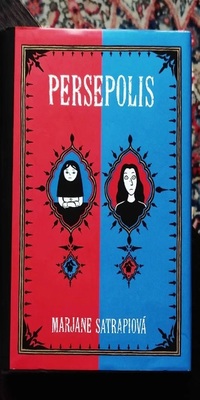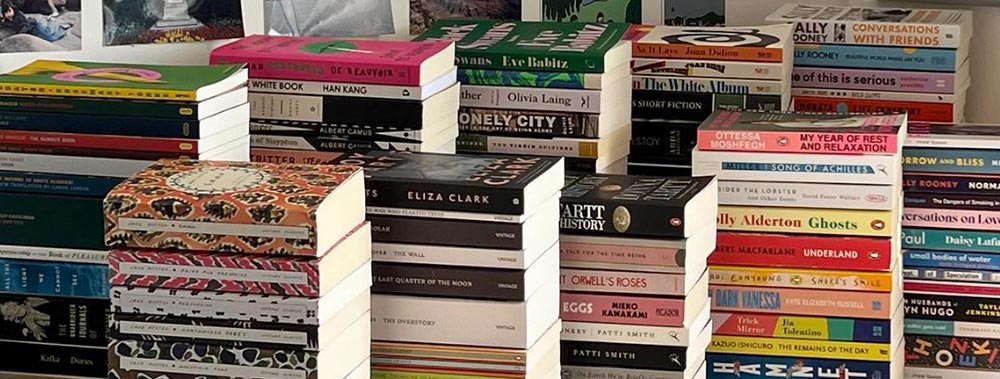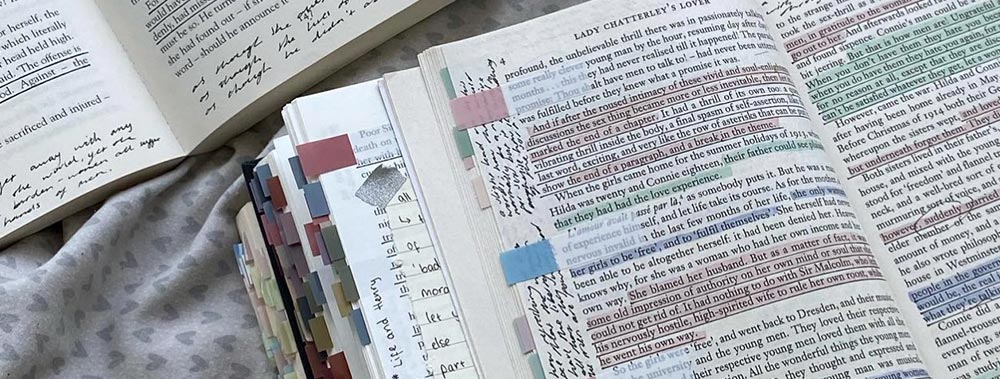Persepolis : Summary, Plot, Characters, Literary Analysis & More
“Persepolis” is a graphic novel by Marjane Satrapi, first published in 2000.
It stands as one of Marjane Satrapi’s most celebrated accomplishments, receiving both critical acclaim and widespread popularity.
“Persepolis” offers an insightful portrayal of Marjane’s coming-of-age journey amidst the tumultuous backdrop of the Iranian Revolution, the Iran-Iraq War, and the subsequent rise of the Islamic Republic.
Set in Tehran, the narrative delves into the gripping experiences of Marjane and her family, interwoven with the sociopolitical shifts that redefine their lives.
The book touches upon themes of identity, social class, political oppression, and personal growth.
Through the lens of Marjane’s experiences, “Persepolis” provides a compelling glimpse into Iranian society during a period of intense transformation and captures the resilience of the human spirit against the backdrop of historic upheaval.
Persepolis Summary
Amid political upheaval, Marjane’s family contends with the Iranian Revolution’s changes and the Iran-Iraq War’s impact.
Marjane’s mother stands strong, while political prisoners expose the regime’s harshness. The Iranian government’s power dynamic evolves.
In the midst of war, Marjane’s youthful perspective evolves, witnessing oppression and loss.
Themes of revolution, war, family, and government shape this poignant narrative.

Marjane Satrapi's 'Persepolis' is a graphic memoir, blending humor and tragedy amid political upheaval.
Table of Contents
Summary The Plot Characters Key Themes Genres Language used Literary devices Summing upThe Plot
The Story of a Childhood Persepolis chronicles Marjane’s life against the backdrop of the Iran-Iraq War breaks.
As conflict disrupts her world, the Iranian government’s control tightens. Marjane’s mother remains a steadfast influence, providing guidance and strength.
The plot follows the life of the author, Marjane, as she grows up in Iran.
The story is divided into two parts: the first part covers her childhood and early teenage years, while the second part deals with her adolescence and early adulthood.
The narrative is presented through a series of black-and-white comic panels.
Throughout the book, Marjane’s experiences are intertwined with the political and social changes happening in Iran. She is born into an educated and politically active family.
As a young girl, she witnesses the overthrow of the Shah’s regime and the rise of the Islamic Republic led by Ayatollah Khomeini.
Marjane is initially excited about the revolution, but she soon becomes disillusioned as she witnesses the restrictions placed on personal freedoms and the oppressive nature of the new regime.
Amid the turmoil of the revolution and the subsequent Iran-Iraq war, Marjane’s family sends her to study abroad in Austria to ensure her safety.
This decision leads her to confront issues of identity, cultural differences, and personal growth.
She experiences challenges such as loneliness, adapting to a new culture, and navigating her identity as an Iranian woman in a foreign country.
Marjane eventually returns to Iran but finds herself struggling to fit into the strict societal norms. She rebels against the government’s regulations and the mandatory wearing of the veil.
Her outspokenness and defiance lead her into dangerous situations, and she witnesses the harsh consequences of standing up against the regime.
The book portrays Marjane’s struggles with family, love, friendship, and her quest for personal and political freedom.
The narrative is not only a personal story but also a reflection of Iran’s complex history, from the overthrow of the Shah to the tumultuous aftermath of the revolution.
Characters
The characters that inhabit this narrative are both products and shapers of their time, their lives interwoven with the seismic shifts brought about by revolution, war, and societal transformation.
From the resilient and rebellious Marjane herself to the supporting cast that enriches her journey, each character offers a unique lens through which to explore themes of identity, resilience, and the intricate dance between individual lives and the broader currents of history.
In this section, we delve into the diverse array of characters that populate the book, examining their roles, relationships, and the ways in which they contribute to the vibrant mosaic of this deeply personal yet universally resonant story.
Marjane Satrapi
Marjane, the protagonist and author’s alter ego, navigates the tumultuous times of the Iranian Revolution, the Iran-Iraq War, and the rise of the Islamic Republic.
Her strong-willed nature and curiosity drive her to question authority and seek the truth.
Marjane’s coming-of-age journey and her resilience against political oppression showcase her growth from a spirited child to a determined young woman.
Marjane’s Mother
Marjane’s mother stands as a pillar of strength throughout the narrative, offering unwavering support and guidance during the turbulent times of revolution and war.
Her courage in speaking out against injustice and her commitment to her family provides a powerful example for Marjane. Marjane’s mother’s influence shapes her daughter’s worldview and underscores the importance of maternal wisdom in times of crisis.
Iranian Government
The Iranian government represents the shifting political landscape and the oppressive forces that impact the characters’ lives.
Its authority tightens during times of conflict, affecting the characters’ choices and freedoms.
The government’s actions during the Iranian Revolution and the Iran-Iraq War contribute to the challenges faced by Marjane and her family, highlighting the broader societal struggle against a repressive regime.
Marjane’s Father
Marjane’s father, a passionate intellectual, shares his progressive views with Marjane and encourages her to think critically.
His past involvement with communist groups and his tragic death underscore the impact of political ideologies on individual lives and the sacrifices made for principles.
Uncle Anoosh
Uncle Anoosh, Marjane’s maternal uncle, is a symbol of resistance and familial connection.
His stories inspire Marjane’s understanding of her heritage and the importance of challenging oppression. His execution underlines the harsh realities faced by those who oppose the government.
Marjane’s Grandfather
Marjane’s grandfather’s stories of the family’s past generations connect Marjane to her cultural and historical roots.
His tales offer insight into Iran’s history and tradition, providing a broader context for the events surrounding her.
Michael Jackson
A pop culture icon in the midst of the revolution and war, Michael Jackson’s music and influence serve as a source of escape and connection for Marjane and her peers, highlighting the role of Western culture in their lives.
Satrapi Family Members
Various members of Marjane’s extended family, including her grandmother and great-uncle, contribute to her understanding of her heritage and the ways in which Iran’s political shifts impact different generations.
Key Themes
Satrapi delves into several interconnected themes that shape the narrative’s depth and impact.
The story of Marjane’s childhood, from her family’s experiences to her personal growth, highlights the profound impact of historical events on an individual’s coming-of-age journey.
Marji’s rejection of societal norms, exemplified by her defiance of the Islamic regime’s constraints, showcases her determination to carve her own path despite external pressures.
The Iran-Iraq War serves as a backdrop to the narrative, emphasizing the harsh realities of conflict and its lasting consequences on ordinary lives.
Marjane’s connection with her Uncle Anoosh, who was executed for his beliefs, exemplifies the sacrifices made in the face of oppressive regimes and emphasizes the theme of resistance against authoritarianism.
Furthermore, Marji’s encounters with Islamic fundamentalists and her internal struggles epitomize the tensions between personal freedom and societal expectations.
These themes collectively create a powerful narrative that underscores the complexities of growing up in a politically charged environment while seeking individual identity and autonomy.
The Theme of Personal Growth
Marjane’s personal growth is a central theme throughout the memoir.
The story begins with her as a young child, full of innocence and curiosity.
As the revolution unfolds, Marjane’s perceptions of the world around her shift, and she becomes increasingly aware of the political and social issues affecting her country.
Her journey from childhood to adolescence to adulthood is marked by the challenges she faces, the relationships she forms, and the lessons she learns.
Marjane’s growth is not just physical, but also emotional and intellectual.
She grapples with questions of identity, freedom, and individuality as she tries to find her place in a society that is rapidly changing.
The Theme of Conflict
The backdrop of the Islamic Revolution and the subsequent Iran-Iraq War sets the stage for various conflicts in Marjane’s life.
These conflicts are not only external, but also internal, as Marjane wrestles with her own beliefs, desires, and fears.
She faces conflicts between her desire for personal freedom and the restrictions imposed by the new regime.
Her struggles to reconcile her family’s progressive values with the conservative norms of the revolution lead to moments of inner turmoil.
Additionally, the war introduces the theme of conflict on a larger scale, highlighting the impact of violence, loss, and the fragility of human life.
The Theme of Societal Expectations
“Societal expectations” is a key theme that is explored through Marjane’s interactions with her family, friends, and the larger Iranian community.
The revolution brings about new norms and rules that challenge the traditional values and lifestyles Marjane’s family held.
She grapples with expectations placed on her as a young woman, including dress codes, behavior, and the role she should play in society.
Marjane’s rebellious nature often puts her at odds with these expectations, and she frequently navigates between conformity and asserting her individuality.
Genres in Persepolis
“Persepolis” uniquely blends genres, primarily functioning as a graphic memoir and bildungsroman.
As a graphic memoir, it merges visual elements with personal narrative, allowing readers to vividly experience Marjane’s story.
The bildungsroman aspect captures Marjane’s growth from a young girl to a mature woman, with her experiences against the backdrop of the Islamic regime, the Iran-Iraq War, and her family’s struggles.
The fusion of these genres enhances the narrative’s impact, enabling readers to connect emotionally with Marjane’s journey and gain profound insights into both personal and historical dimensions.
“Persepolis” by Marjane Satrapi is a work that seamlessly fits into two distinct genres: graphic memoir and bildungsroman.
Graphic Memoir
A graphic memoir is a genre that combines text and visual elements, usually in the form of a comic or graphic novel, to tell a personal narrative or autobiographical story.
“Persepolis” is a prime example of a graphic memoir as it presents Marjane Satrapi’s own experiences and perspective during a crucial period in Iran’s history.
The use of vivid illustrations alongside written narration allows readers to not only understand Marjane’s thoughts and feelings but also visually engage with the historical and cultural context of Iran.
The black-and-white artwork conveys emotions, contrasts societal norms, and brings a unique visual dimension to her personal journey. The graphic format enables a more immersive experience, making the story’s impact more immediate and powerful.
Bildungsroman
A bildungsroman is a genre that focuses on the protagonist’s coming-of-age, personal growth, and self-discovery.
It typically follows the main character’s development from youth to adulthood, often involving challenges, conflicts, and transformative experiences.
“Persepolis” is also a bildungsroman, as it traces Marjane’s growth from childhood to young adulthood amidst the backdrop of political turmoil.
Marjane’s evolution is a central focus of the memoir. Readers witness her transformation from an inquisitive and rebellious child into a more self-aware and resilient individual.
The challenges she faces—ranging from navigating societal expectations to confronting political upheaval—contribute to her growth.
The bildungsroman aspect of the story emphasizes the universal themes of identity, autonomy, and the search for one’s place in the world.
Language used in Persepolis
Marjane Satrapi’s language and writing style in “Persepolis” is candid and emotionally charged.
Through her storytelling, she conveys the intimate atmosphere of her family’s experiences, such as her father’s tragic fate due to his association with communist ideals.
The language captures Marji’s rejection of societal norms and her internal struggles, underscoring the emotional complexity of her journey.
The book’s portrayal of a childhood set against the backdrop of an Islamic regime and the Iraq-Iran War creates a haunting and vivid atmosphere, while Marji’s growth and decisions add layers of reflection and introspection.
The language serves as a conduit for readers to connect with Marji’s emotions and empathize with her challenges during these pivotal times.
Literary devices in Persepolis
Satrapi employs a captivating array of literary devices that enrich the narrative’s depth and impact. Through evocative imagery, she brings characters and settings to life, immersing readers in the world she experienced.
The graphic novel format intertwines with the bildungsroman genre, tracing Marji’s growth from childhood to adulthood in the midst of historical upheavals. Satrapi skillfully employs symbolism and metaphor to convey complex themes of identity, resistance, and political change.
The use of irony and allusion adds layers of meaning, while her straightforward narrative voice creates an emotional connection. These literary devices work harmoniously to craft a compelling and thought-provoking account of personal and societal transformation.
Similes
In “Persepolis,” Marjane Satrapi employs similes that intricately weave emotions and contexts.
When describing Marji’s mother, she likens her voice to “a weapon” against oppression, emphasizing her strength and defiance.
The simile comparing Marji’s parents’ reaction to her desire to be a prophet to “facing a firing squad” underscores the gravity of her father’s past, killed for his communist beliefs.
As Marji rejects societal norms, she compares herself to a “cabbage” to convey her feelings of isolation.
These vivid similes invite readers into Marji’s story of childhood while emphasizing the impact of her parents’ experiences and her own struggles, contributing to a deeper understanding of the character’s emotions and the complex historical backdrop.
Metaphors
Metaphors in this work imbue the narrative with nuanced meanings.
The metaphor of “a young boy whose father killed Communists for fun” encapsulates the brutality of the regime through vivid imagery, serving as a haunting commentary on the destructive power of ideological fervor.
As Marji spends, metaphorical depictions of everyday life under an oppressive regime highlight the contrast between her innocent experiences and the political turmoil that surrounds her.
Marji grows close to Uncle Anoosh and that growth is metaphorically paralleled with a plant seeking light in the darkness, symbolizing her yearning for personal growth amid adversity.
The metaphor of Marji deciding to wear the veil like “having a social life with an invented friend” underscores her struggle to balance her true self with societal expectations, resonating with the internal conflicts many face under a repressive regime.
Analogies
Satrapi employs analogies to illuminate complex concepts with vivid clarity.
The transition to the new Islamic republic is likened to “having a new bicycle but not being allowed to ride it,” capturing the tension between perceived freedoms and their limitations under the regime.
The analogy of the new Islamic regime to “changing the puppet, but the puppeteer remained the same” succinctly conveys the persistence of control despite apparent shifts in leadership.
The title itself, “Persepolis: The Story,” acts as an analogy for the ancient Persian city, drawing parallels between historical empires and personal histories, evoking a sense of grandeur and vulnerability.
Marjane’s connection to her uncle serves as an analogy for maintaining ties to one’s heritage amidst societal change, offering readers relatable access points to intricate themes.
Imagery
Satrapi masterfully employs vivid imagery to immerse readers in the turbulent atmosphere of her narrative.
Descriptions of the oppressive Shah’s regime conjure images of authoritarian rule, while evocative depictions of religious fundamentalists create a palpable sense of theocracy’s influence.
The motif of childhood in Persepolis is richly depicted, with imagery painting a stark contrast between youthful innocence and the encroaching shadows of religious extremism.
The image of openly protesting citizens facing tanks evokes courage and sacrifice, vividly placing readers within the charged atmosphere of social unrest.
Through imagery that evokes historical events and Iranian history, Satrapi conveys the weight of cultural memory. The Shah’s secret police, depicted in shadowy forms, symbolize pervasive surveillance and fear.
As Marji turns away from religion, the darkness of her veil imagery signifies both defiance and her evolving identity.
The French school imagery is a gateway to modernity, shaping Marji’s growth and transformation.
The imagery of young boys emphasizes the loss of innocence amidst war’s harsh realities, while Marjane grows in dimensions, both physically and emotionally, through the novel’s imagery-rich storytelling.
Symbolism
“Persepolis” is rich with symbolic elements that resonate with larger themes.
The Shah’s regime symbolizes autocratic power, while religious fundamentalists stand as a representation of theocracy’s encroachment on individual freedoms.
Childhood in Persepolis becomes a symbol of innocence contrasted against the backdrop of political upheaval.
The motif of religious extremism symbolizes the narrowing of societal values. The act of openly protesting embodies the courage to challenge oppressive regimes.
Marji’s journey symbolizes the struggle for identity amidst cultural and political shifts. Marjane’s transformation in the novel is symbolized by her turning away from faith, illustrating a search for autonomy.
Furthermore, the veil is a powerful symbol of religious constraints and female identity.
The French school serves as a symbol of modernity’s allure and transformative impact; young boys symbolize the loss of youthful innocence in the face of war’s harsh realities.
These symbols collectively enrich the narrative, offering readers a deeper understanding of the story’s themes and messages.
Personification
Satrapi employs personification to breathe life into characters and settings. Instances such as Marji seeing the regime’s veil as a “black ghost” humanize political entities, adding emotional resonance.
The personified fighter pilot becomes an emblem of war’s destruction, while the violent events are portrayed as a voracious monster consuming innocence. The Satrapis’ decision to leave Iran personifies the complexity of family choices.
The political situation assumes human qualities, reflecting the turmoil it inflicts. Personifying the new regime and its promise of change creates a dynamic backdrop for transformation.
Collectively, these personifications deepen our connection to the characters and setting, amplifying the story’s impact.
Hyperbole
The prime minister’s enormous presence in the country is exaggerated, underscoring his control.
As Marji sees “many young boys” transformed into martyrs, the exaggeration magnifies the tragic toll of war. The fundamentalist regime is depicted as reaching its “climax,” intensifying the atmosphere of oppression.
The violent events are heightened, amplifying their impact on characters. The Baba Levys’ over-the-top wealth emphasizes their luxurious lifestyle.
Exaggerating the Satrapis’ decision to return underlines the complexity of their situation.
Hyperbole navigates the emotional terrain, creating a stark, vivid, and emotionally charged narrative that resonates deeply with readers.
Irony
“Persepolis” weaves various types of irony, enriching its narrative impact.
Situational irony surfaces as Marji decides to become a prophet, while her dreams underscore the contrast between youthful aspiration and the oppressive fundamentalist regime.
Verbal irony emerges when Marji finds solace in her French upbringing, reflecting irony in the midst of turmoil. Her struggles for identity and autonomy underpin dramatic irony, engaging readers’ emotional connection.
The overarching irony lies in the title’s historical allusion to the grandeur of Persepolis juxtaposed against the tumultuous events, conveying the stark contrasts in Marji’s life.
Juxtaposition
The contrast between Marji’s youthful innocence and the harsh realities of her society emphasizes the innocence lost amidst political upheaval.
Juxtaposition surfaces as Marji’s determination to express herself contends with societal norms. Her struggles stand in stark contrast to her yearning for more freedom, creating thought-provoking scenarios.
The book’s powerful use of juxtaposition continually emphasizes the clash between individual aspirations and the restrictive environment, compelling readers to contemplate the complex interplay between personal growth and external constraints.
Paradox
As Marji struggles to reconcile her Western and Iranian identities, her journey unfolds in a nation facing its own identity crisis.
The martyrdom of Marjane’s uncle for a cause symbolizes both sacrifice and the futility of ideological conflict.
The title, “Persepolis: The Story of Childhood,” paradoxically merges grand historical narratives with the personal, portraying the interplay between collective history and individual experiences.
The larger-than-life prime minister holds sway over the country while being eclipsed by the potent forces he controls. These paradoxes echo the intricate relationships between individuals and society, past and present, illuminating the nuanced layers of the narrative.
Allusion
The reference to Marji’s uncle as a “hero of the people” alludes to his sacrificial stance within a wider political context.
The title of the book alludes to historical legacies, evoking connections between the past and Marji’s personal experiences. The prime minister’s image alludes to the power dynamics of historical rulers.
These allusions create a bridge between personal narratives and broader historical events, inviting readers to consider the deep-rooted influence of history on the characters’ lives.
Allegory
“Persepolis” exhibits allegorical elements that extend beyond personal narratives.
The Satrapis’ decision to leave Iran embodies the broader theme of individual resistance against oppression. Instances of social activism reflect the collective struggle against authoritarian regimes.
Marji’s parents’ decision serves as an allegory for families navigating complex choices amidst social turmoil. The act to wear veils represents women’s limited agency under the regime, symbolizing a broader narrative of societal constraints.
References to social classes within Tehran allegorically underscore the disparities exacerbated during tumultuous times. As war intensifies, the allegory of Tehran under siege becomes a microcosm of societal upheaval.
The shah allegorically embodies the oppressive power dynamics. Taher’s death serves as an allegorical reminder of personal loss amid national turmoil, mirroring broader societal grief.
Ekphrasis
While “Persepolis” predominantly captures personal experiences, it subtly engages in ekphrasis through vivid descriptions of art. Marji’s parents’ decision to encourage her social activism is paralleled with revolutionary slogans in street art, invoking imagery that mirrors the family’s commitment to change.
Instances of wearing veils vividly describe how they obscure women’s identities, mirroring the coverings that shroud freedom.
The depiction of Tehran and its transformation serves as an ekphrastic portrayal of a city’s evolution during turmoil.
Amid war’s intensification, the vivid description of a missile provides readers with a visual representation of danger.
While not overt, these instances of ekphrasis contribute to the book’s rich narrative texture.
Puns
While “Persepolis” doesn’t heavily rely on puns, its significance lies in its ability to craft double meanings.
The title’s duality refers both to ancient history and Marji’s personal journey, symbolizing the interplay of grand narratives and individual stories.
Marji’s dual identity as “Marjane” and “Marji” mirrors the book’s themes of identity and change, adding complexity to her character.
The Use of Dialogue
In “Persepolis,” dialogue is a multifaceted tool employed to illuminate character traits, themes, and narrative tension.
Taher dies and that death is poignantly conveyed through dialogue, encapsulating grief and exposing familial bonds.
As the Satrapis decide to leave Iran, their dialogues unveil the complexity of family dynamics against the backdrop of political turmoil, enriching themes of sacrifice and agency.
The exchanges between characters exemplify the tension between personal desires and societal norms, underscoring themes of identity and resistance.
Marjane’s dialogues with Marji’s mother unveil the strength that comes from maternal wisdom, while discussions about historical events weave educational context into the narrative.
Dialogue, laden with subtext and emotion, provides readers with intimate insights into the characters’ struggles, beliefs, and growth within the tumultuous environment.
Parallelism
Instances of parallelism are strategically woven into “Persepolis,” enhancing its structure and messaging.
The Satrapis’ decision to leave Iran and Marji’s eventual decision to leave are parallel narratives that underscore the theme of seeking liberation and growth.
Parallel moments like Marjane’s experiences in Iran and Austria highlight cultural disparities and personal adaptation.
These instances provide a cohesive framework, allowing readers to discern patterns and themes across diverse experiences.
Persepolis : FAQs
In this section, you’ll find answers to common questions about how “Persepolis” fits into these genres, the significance of its themes, and the ways in which its graphic format enhances the storytelling experience.
What is the summary of Persepolis?
“Persepolis” is a graphic novel that follows the life of Marjane Satrapi, a young girl growing up in Iran during and after the Islamic Revolution. The story is divided into two parts: the first part chronicles Marjane’s childhood and early teenage years. The second part focuses on her adolescence and early adulthood, as she navigates the challenges of identity, freedom, and personal growth against the backdrop of a restrictive society.
What is the main point of Persepolis?
The main point of “Persepolis” is to provide a deeply personal and human perspective on the history, politics, and culture of Iran during a period of immense change. Marjane Satrapi’s story illustrates the impact of political events on individual lives and the challenges of navigating a society where personal freedoms are constrained by a strict regime.
What are three major events in Persepolis?
The three major events in Persepolis are The Islamic Revolution, Marjane’s Exile, and her return to Iran.
What is the overall meaning of Persepolis?
The novel emphasizes the complexity of identity, the challenges of navigating a society under a repressive regime, and the universal struggle to retain one’s individuality and ideals in the face of adversity. Through Marjane’s journey, the book explores themes of resilience, cultural identity, and the enduring human spirit.
Summing up: Persepolis : Summary, Plot & More
“Persepolis” by Marjane Satrapi stands as a poignant and compelling narrative that highlights her personal growth against the backdrop of historical upheaval.
Through the lens of a graphic memoir, Satrapi skillfully weaves the threads of her own experiences to create a story that transcends its specific time and place, resonating universally with themes of identity, resistance, and resilience.
“Persepolis” underscores its exploration of Marji’s childhood and coming-of-age journey, intricately intertwined with Iran’s tumultuous history encompassing the Islamic Revolution, the Iran-Iraq War, and oppressive regimes.
Themes of family, cultural heritage, and the pursuit of individuality are etched into the narrative, while vivid imagery, allegory, and literary devices imbue the story with profound emotional depth.
“Persepolis” reveals the power of storytelling to bridge the gap between personal experiences and broader historical contexts.
Marjane Satrapi’s masterful narrative captures the essence of human struggle, reminding us that even amidst societal upheaval, the individual spirit can flourish and transform.
This graphic memoir is a testament to the resilience of the human spirit and a lasting portrayal of the interconnectedness of personal and historical narratives.
Other Notable Works by Marjane Satrapi
If you are interested in “Persepolis” by Marjane Satrapi, you may also find these other notable works by the author intriguing:
- “Embroideries“: In this graphic novel, Marjane Satrapi delves into the private lives and conversations of Iranian women, exploring themes of gender, relationships, and societal expectations through candid discussions.
- “Chicken with Plums“: Satrapi presents a poignant tale of her great-uncle, Nasser Ali Khan, a celebrated musician who decides to die when he can no longer find the perfect instrument. The story examines art, love, and the human spirit.
- “Persepolis 2: The Story of a Return“: This continuation of Marjane Satrapi’s graphic memoir dives into her experiences as a young woman in Europe after leaving Iran. It delves into themes of identity, cultural displacement, and the search for belonging.
- “The Sigh“: A fairy tale for all ages, “The Sigh” showcases Satrapi’s storytelling prowess beyond memoir. This whimsical tale explores love, sacrifice, and the magic of dreams.
Marjane Satrapi’s diverse works traverse various themes and genres, offering readers a range of thought-provoking narratives that reflect her unique perspective on life, society, and the human experience.







